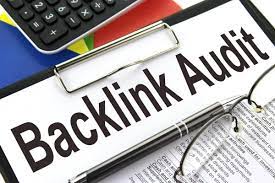A backlink audit is the evaluation of all links heading to your website. It implies you must locate them, distinguish between the bad and good ones, and devise a strategy to deal with them. You can manually review all of your backlinks by downloading the list of links from Google Webmaster Tools.

How to Do a Backlink Audit in 5 Simple Steps
Step 1: Benchmark Your Backlink Profile Against Competitors
This is optional. It can provide some insight into your competitors’ link-building techniques and assist you in giving your profile the most accurate score.
Enter your domain and 1-4 rivals’ domains into Backlink Analytics. The ‘Overview’ tab has all the information you need to determine whether your link development strategy is on track.
What You Should Look at
- Number of backlinks, domains, or referring IPs to measure your backlink footprint in comparison to the competition
- Use the Authority Score to determine how appealing your domain should be to potential link builders.
- Backlink types can be used to determine which of your rivals’ content is most linked to.
- Link attributes to identify potential flaws in your competitors’ profiles.
- Refer to Domains to see whether you should reach out to more domains than you are currently.
Step 2: Find and Evaluate Each Backlink You Have
Now that you know whether your backlink portfolio is relevant to the competition, it is time to identify the major obstacles that are preventing you from outperforming them. You should start by looking for spammy links that may hurt your rankings, but this is only the first step.
There are various other things to keep an eye on, such as valuable links that you may be losing or holes in your link-building approach.
Semrush may be used to locate and analyze your backlinks. Go to the Backlink Audit tool, create a Project, and customize it (input your target countries, categories, and brand name). This will help the tool determine how relevant each link is.
What You Should Look at
- Overall, the toxicity score is high. There are an excessive number of questionable links leading to your website.
- The total number of analyzed backlinks is either too high or too low. A spam attack may occur if it is high and you are not currently establishing links or posting such material. If it is too low, other online users may regard your site as harmful.
- There are a limited number of referring domains. Having too many links from a single domain can raise Google’s suspicions.
- The referring domains have a high toxicity score. This could be due to bad link-building or negative SEO.
- A high proportion of do follow or USG links. A natural profile cannot be made up of only one sort of link, especially if the anchors are unimportant.
- Money and compound anchors are common. Google considers these to be potentially harmful.
- A spike in the number of backlinks earned or lost over a specific period. It should be viewed in the same way that the total number of analyzed backlinks should be.
Step 3: Decide Whether to Disavow or Remove Harmful Links
The next stage is to determine whether or not to delete any hazardous backlinks. This can be accomplished in two ways:
1. contacting the referring website owner and requesting that the connection be removed (Removal)
2. Sending it to the disavow list and then exporting it to the Google Disavow tool (Disavow)
To avoid wasting time contacting spammers and scammers, divide your poisonous links into those you can and cannot have removed.
Whitelist all links with a Toxic Score of less than 45 on the Backlink Audit tool’s ‘Audit’ tab. Then, filter the list to see your toxic links and try to group them according to the main issues you discovered in Step 2.
For example, if you have a high Toxicity Score, you must understand which links are to blame. Because the most toxic links are displayed first, you can examine their markers and filter your list to find others that are similar. Unfortunately, the links you uncover with this method are almost certainly from websites whose owners aren’t interested in complying with your request to delete the link.
Similarly, you can filter the list by link attribute or anchor, which will give you some links that you may want to eliminate.
Another method of organizing connections is by the source of the problem: URL, Page Title, Target URL, or Anchor text. It’s particularly useful when dealing with negative SEO.
Add the links that can be removed to the ‘To Remove’ list and the ones that can’t be removed to the ‘To Disavow’ list. Keep in mind that you will need to justify your decision to repudiate Google.
Consider whether you want Google to ignore links from a single URL or the entire domain. In the future, the latter may prevent your website from receiving potentially advantageous links.
Step 4: Cleanup Your Backlink Portfolio
Removal
Connect your email to the ‘Remove’ page, where you sent some of your hazardous URLs in Step 2. Customize the template to request the removal of a link. The recipient’s email address will be recognized automatically or manually if it is found on the internet.
It is critical to adopt the proper approach when requesting that a link be removed. When contacting webmasters, you must demonstrate that you are not a spambot. The message should come across as natural and respectful.
You will be able to monitor the responses in both Semrush and your own inbox. If you need a disavow in the future, use these as proof of your efforts.
Disavowing
If a link cannot be found or the website owner cannot be reached, your only choice is to disavow.
Navigate to the ‘Disavow’ tab, export the contents to.txt, and then upload it to the Google Disavow tool for the relevant domain.
Step 5: Find New Opportunities to Build Valuable Links
A backlink audit entails more than simply identifying and eliminating bad backlinks. It can assist you in identifying new prospects for high-quality links and improving your overall link-building approach. In lieu of a conclusion, here are a few pointers.
- Connect your Google Analytics and Google Search Console to Backlink Audit to provide Semrush with information about your backlinks. To find out which pages of your website you can optimize for increased backlinks and referral traffic, go to the ‘Target Pages’ tab.
- Backlink Analytics’ Referring Domains data can be exported. Add to your outreach list the credible domains that currently connect to your competitors.
- Keep a watch on the Backlink Audit’s ‘Lost and Found’ report to ensure you don’t miss any significant changes to your backlink profile. Use the Link Building tool to contact website owners in order to repair damaged or lost links.

